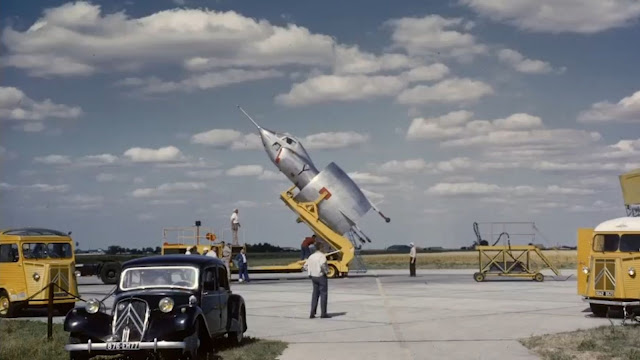The Futuristic French Plane Designed To Fly Without Wings
Since the sunrise of man, we've gazed into the sky and yearned to fly. Even people with not less than aeronautical acumen recognize that to attain flight, you want wings to generate carry to get a aircraft off the ground.
And what do planes want for that? Long runways. Runways are, through their very nature, difficult as they soak up vast swaths of land and are luxurious to construct and maintain. Military runways, in particular, are focused first in a war, the Smithsonian Magazine notes, due to the fact in case you take out an enemy`s runways, you have correctly removed its air force.
During the 1950s, plane engineers commenced wondering outdoor the box. If planes had greater power, they may not want runaways at all. Thus commenced a wave of experimentation with early styles of Vertical Take-Off and Landing (VTOL) plane recognized as "tail-sitters," that, if established successful, could essentially dispose of the want for runaways totally considering that they might take off from sincerely anywhere, per Mustard.
Acclaimed French plane engine builder SNECMA (Société Nationale d'Études et Construction de Moteurs d'Aviation, now Safran Aircraft Engines), the usage of designs from Austrian engineer Helmut von Zborowski, commenced constructing a prototype aircraft that did not use usual delta-fashioned wings. In fact, the C.450 Coléoptère (the French phrase for "beetle") did not have wings at all, consistent with Smithsonian Magazine). To paraphrase Mel Brooks ("Blazing Saddles"), who paraphrased John Huston ("The Treasure of the Sierra Madre") — "Wings? We do not want no stinking wings."
Tail-sitters are precisely what you believe them to be — planes status upright on their tales.
Spread your round donut wing and fly?
Powered through an axial-glide turbojet engine, the Coléoptère had a 10.5-foot diameter ring-fashioned "wing" that encircled the lowest 1/2 of of the aircraft. SNECMA was hoping to finally make it a RAM jet through compressing the incoming air, blending it with fuel, and lighting fixtures a hearthplace that could ship it properly past MACH speeds, Mustard notes.
During take-offs and landings, thrust could be deflected the usage of vanes housed withinside the engine's exhaust. Four small fins strategically located round the "wing" could act as rudders to offer directional manage at the same time as in flight. Retractable fins tucked withinside the nostril could set up and assist tilt the aircraft upright into "landing" mode.
An modern swiveling cockpit seat allowed the pilot to stay in a locked and upright function primarily based totally at the aircraft's alignment. Since those had been the times earlier than effective pc simulations, human check pilots needed to strap in and supply those prototypes a go. It commenced real-global trying out in April 1959, and extreme issues sprung up nearly immediately. Without a stabilizing wing, the aircraft spun at the same time as soaring withinside the vertical take-off stage. Sitting like astronauts on pinnacle of a rocket, pilots had trouble seeing the ground. Lastly, with out wings, which theoretically could permit it to float to protection if the engines failed, the Coléoptère could be doomed consistent with Mustard.
On July 25, 1959, SNECMA examined the aircraft's cappotential to transition from vertical take-off into horizontal flight mode. It tilted too far, and the pilot could not regain manage. He ejected to protection, however the Coléoptère became destroyed withinside the process. Funding for a 2d prototype by no means materialized, and the task became scrapped (thru Mustard).











Post a Comment